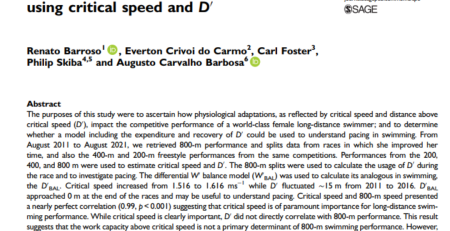How do swimmers pace the 400 m freestyle and what affects the pacing pattern?
This study examined the race pattern of world-class swimmers in the 400-meter freestyle event. We observed that the majority of athletes followed a parabolic pacing pattern and that aerobic capacity significantly impacts performance in the 400 meters. READ!

